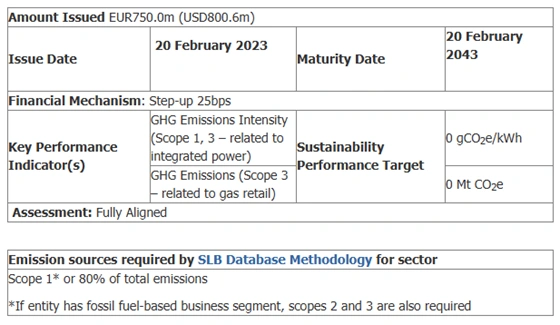Future Research Directions on SustainabilityLinked Bonds (SLBs) and Their Role in Climate Transition
Examine the effectiveness, additionality, governance, and difficulties of Sustainability-Linked Bonds (SLBs) and their role in the climate transition in future studies…..
Introduction
Sustainability-linked bonds (SLBs) have emerged as key financial tool in transitioning low-carbon economy. Traditional green bonds allocate proceeds exclusively for environmentally friendly projects whereas SLBs are structured around predefined sustainability performance targets (SPTs). While this offers flexibility for issuers, it raises concerns regarding greenwashing, governance, and credibility in climate finance.
This paper outlines the future research directions on SLBs, providing potential topics, background context, research questions, methods, and hypotheses. The goal of this paper is to guide doctoral and postgraduate research in finance, economics, and sustainability, contributing to climate finance effectiveness.
The Climate-Related Additionality of Sustainability-Linked Bonds
Background Context
A major challenge in sustainable finance is to ensure that SLBs drive genuine environmental impacts. Some issuers may align their SPTs with pre-existing business plans rather than setting new decarbonization goals. As a result, SLBs’ effectiveness in advancing real sustainability progress depends on the climate-related additionality
To illustrate, Enel, an Italian multinational in the electricity and gas sectors, has issued SLBs linked to ambitious decarbonization targets, such as having no emissions intensity for electricity generation, specifically targeting zero gCO₂e/kWh emissions intensity by 2040 [2].

(Source: SLB Case Studies - Climate Bonds)
Such strict policy implementations would not only ensure the effectiveness but also will lead to more meaningful sustainable practices.
Research Questions
- Do SLBs result in additional emissions reduction than what the issuers have achieved on their own?
- Are climate targets set by issuers challenging, or are they simply in line with business?
- How can one guarantee that SLB commitments result in real environmental action by using external validation frameworks?
Suggested Methodologies
- Comparative analysis: Compare the climate targets of SLB issuers with other similar firms that have not issued SLBs.
- Longitudinal study: Emissions reductions of SLB issuers are tracked over time.
- Regression analysis: SLB issuance is correlated with better environmental performance, not through regression analysis.
Potential Hypotheses
H1: SLB issuers with external validation mechanisms (e.g., Science-Based Targets Initiative) demonstrate greater additionality than those without.
H2: The level of additionality in SLB issuers’ sustainability targets varies by industry, with high-carbon sectors setting more ambitious goals.
Suggestions for Initial Readings
Dahlmann, Frederik, Layla Branicki, and Stephen Brammer. 2019. "Managing Carbon Aspirations: The Influence of Corporate Climate Change Targets on Environmental Performance." Journal of Business Ethics, 158(1): 1–24.
Dietz, Simon, et al. 2018. "An Assessment of Climate Action by High-Carbon Global Corporations." Nature Climate Change, 8(12): 1072–1075.
The Effectiveness of SLB Penalties and Incentives
Background Context
SLBs usually embed financial penalties or rewards depending on the issuer’s capacity to achieve sustainability goals.
For example, Ofwat penalized Thames Water £57 million for missing environmental targets, contributing to £157.6 million in total fines imposed on UK water companies for failing to cut sewage spills by the targeted 30% between 2020-25 [3].
However, the effectiveness of these mechanisms in driving real climate action remains doubtful. If penalties are too lenient, issuers may fail to meet their commitments without consequences, raising concerns about greenwashing and SLBs' credibility
Making a codified penalty and reward system that is effective in terms of streamlining the practices is mandatory to achieve sustainability targets rather than simply issuing bonds solely for existence.
Research Questions
Does penalty clauses (such as higher coupon rates) work in forcing the issuers to achieve climate targets?
What is the link between changes in the cost of capital and the climate performance of issuers?
How do investors respond to missing SLB goals and how does this affect future issuances?
Suggested Methodologies
- Event study analysis: Observe the market’s response each time an issuer misses SLB goals.
- Survey-based research: Collect data from institutional investors on how SLB penalties influence their investment decisions.
- Scenario modelling: Describe various coupon penalty rates and their effects on corporate actions and decision-making.
Potential Hypotheses
H1: Higher coupon penalties result in stronger issuer commitment to sustainability goals.
H2: Investors penalize firms that miss SLB goals by increasing their required return on future issuances.
Suggestions for Initial Readings
Flitman, Anna. 2021. "ESG Sustainability Linked Bonds Offer Pricing Perk for Right High Yield Credits."
Gianfrate, Gianfranco, and Mattia Peri. 2019. "The Green Advantage: Exploring the Convenience of Issuing Green Bonds." Journal of Cleaner Production, 219: 127–135.
The Role of SLBs in Sustainable Capital Allocation
Background Context
SLBs are considered one of the most important tools that redirect capital towards sustainable activities. There are still concerns about whether the SLB proceeds actually support the low-carbon transition or merely finance business-as-usual activities without driving meaningful environmental impact
In an instance where Enel, an Italian energy company issued a bond where they agreed to pay a penalty of $1.5 billion if they failed to meet the environmental targets.
However, critics claimed that the penalty amount was relatively lower than their turnover. This made SLBs as a marketing tool rather than a meaningful initiative [4].
Therefore, developing a clear framework for SLB initiatives can enhance initiatives by deriving meaningful changes to the environment.
Research Questions
- Do SLBs allocate capital to genuine transformational sustainability projects?
- How do different industries and sectors utilize SLB proceeds?
- To what extent do SLBs influence broader market trends in sustainable finance?
Suggested Methodologies
- Sectoral case studies: Analysis of SLB capital allocation in key industries such as energy, transportation and manufacturing.
- Portfolio analysis: Review of investor allocations towards SLBs as opposed to other green financial instruments.
- Econometric modelling: Determine if growth in SLB is associated with greater private sector investment in sustainability.
Potential Hypotheses
H1: SLBs are more effective in funding transitional activities in high-carbon industries than in low-carbon industries.
H2: SLB issuance leads to increased sector-wide investment in sustainability beyond the issuer itself.
Suggestions for Initial Readings
ICMA. 2020a. "Sustainability-Linked Bond Principles." International Capital Market Association. https://www.icmagroup.org/assets/documents/Regulatory/Green-Bonds/June-2020/Sustainability-Linked-Bond-Principles-June-2020-171120.pdf.
Giráldez, Juan, and Stephanie Fontana. 2021. "Sustainability-Linked Bonds: The Next Frontier in Sovereign Financing." https://ssrn.com/abstract=3829946.
Regulatory and Governance Challenges in the SLB Market
Background Context
As the SLB market continues to grow, creating regulatory frameworks to achieve standardization and accountability will be crucial. Lack of clear governance mechanisms may lead to greenwashing and lose credibility
For example, the European Union (EU) Taxonomy is a regulatory framework that defines environmentally sustainable economic activities, ensuring transparency and alignment with climate goals [5].
ICMA SLBP, SEC Climate Rules, and China’s CGBP are several other regulatory frameworks that supervise sustainability goals and agreements which ensures standardization and accountability [6][7].
Developing more stringent governance bodies will greatly enhance transparency in SLB initiatives, resulting in increased accountability and standardization.
Research Questions
- How does current regulatory frameworks discipline the effectiveness of SLBs?
- What governance mechanisms are suitable for avoiding issuers from designing weak or easily attainable targets?
- How does the disclosure and reporting of the companies affect investor trust in SLBs?
Suggested Methodologies
- Policy analysis: Review current sustainable finance regulations and evaluate their relevance to SLBs.
- Comparative legal research: Contrast SLB governance in different financial markets (for example, EU vs. US).
- Expert interviews: Get views from regulators, financial analysts, and sustainability professionals.
Potential Hypotheses
H1: Stronger SLB regulatory frameworks correlate with lower greenwashing risks and higher investor confidence.
H2: Increased transparency and disclosure requirements lead to stronger issuer commitment to sustainability goals.
Suggestions for Initial Readings
Kölbel, Julian, et al. 2020. "Can Sustainable Investing Save the World? Reviewing the Mechanisms of Investor Impact." Organization & Environment, 33(4): 554–574.
Maltais, Aaron, Gregor Vulturius, and Heidi Tuhkanen. 2020. "Response to Consultation on ‘Sustainable Finance – EU Classification System for Green Investments’ Related to Regulation (EU) 2020/852." Stockholm Environment Institute. https://cdn.sei.org/wpcontent/uploads/2021/01/consultation-response-sei-sustainable-finance-eu-classificationsystem-for-green-investments.pdf.
The Interplay Between SLBs and Emerging Market Finance
Background Context
SLBs are gaining popularity in developed markets, but their adoption in emerging economies is underexplored. Many developing countries are facing challenges in receiving sustainable finance, and SLBs could serve as a potential tool to mobilize climate finance
Brazil, India, and South Africa are some of the Emerging Market and Developing Economies (EMDE ) that face difficulty in financial assistance regarding sustainability initiatives [8].
Studying the underlying social and economic factors behind challenges that hinder the adoption of SLB can facilitate a smoother adoption in these developing economies.
Research Questions
- What are the barriers that emerging market issuers face in implementing SLBs?
- How does exchange rate risk and country risk affect SLB pricing in developing economies?
- Can SLBs be useful in funding renewable energy projects in emerging markets?
Suggested Methodologies
- Case studies: Examine SLB issuances in emerging economies (e.g., India, Brazil, South Africa).
- Macroeconomic analysis: Assess how inflation, interest rates, and political risk influence SLB adoption.
- Investor sentiment analysis: Study how global investors perceive emerging market SLBs.
Potential Hypotheses
H1: SLBs face higher pricing volatility in emerging markets due to macroeconomic uncertainty.
H2: Investors demand higher risk premiums for SLBs issued in countries with weak sustainability regulations.
Suggestions for Initial Readings
Elwin, Peter, et al. 2021. "Brazil: Roadmap to a Sustainable Future - Nature-Based Challenges, Opportunities and Solutions." London: Planet Tracker and Grantham Research Institute on Climate Change and the Environment.
Natixis. 2021. "Sustainability-Linked Bonds – Investors Views." https://gsh.cib.natixis.com/api_website_feature/files/download/11818/SLB-Survey-Short-Results_2021-03-FinalVersion_LAST.pdf
Conclusion
Though SLBs have the ability to transform corporate sustainability finance, they face significant challenges in governance, credibility, and effectiveness. Addressing these research areas helps scholars contribute to the evolution of SLBs as a credible financial tool for climate transition.
However, conducting in-depth research in these areas requires a deep understanding of their complexities, including regulatory frameworks, market dynamics, and stakeholder expectations.
Interested in tackling the critical challenges in the SLB market? PhD Assistance can help you select a research topic that addresses these key areas and provides the support you need to succeed. Visit PhD Assistance today!

